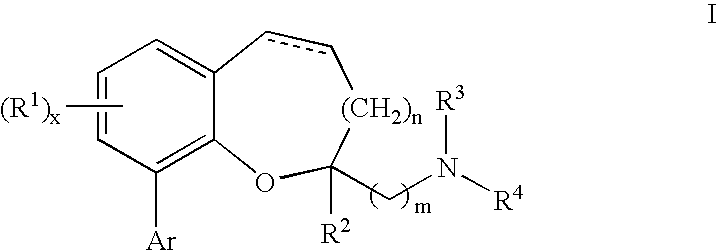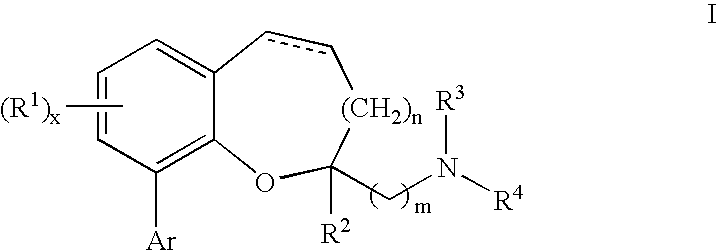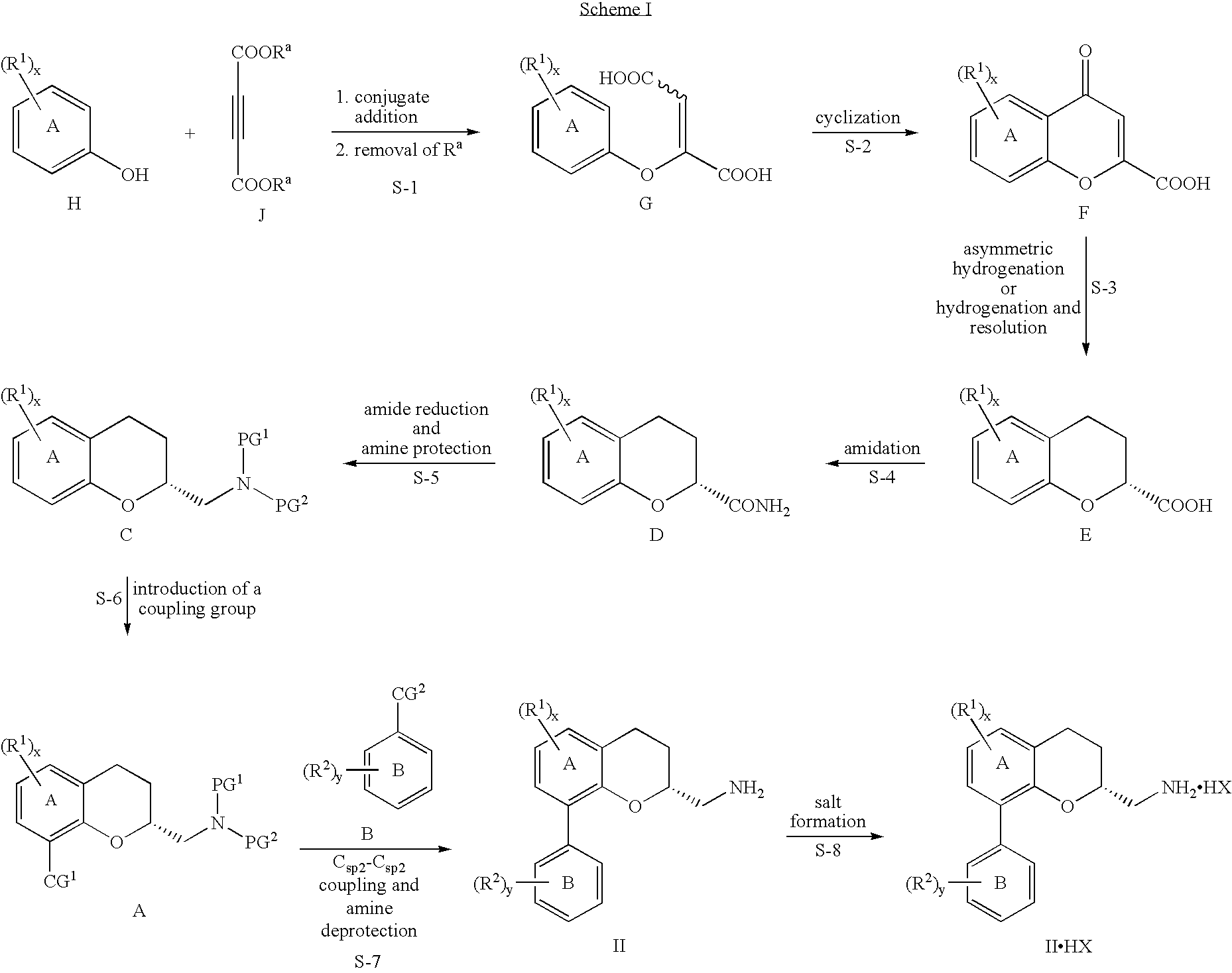Chromane and chromene derivatives and uses thereof
a chromene derivative and chromene technology, applied in the field of 5ht2c receptor agonists, can solve problems such as problematic side effects, and achieve the effect of facilitating the progress of the reaction therebetween and facilitating the suspension of one or mor
- Summary
- Abstract
- Description
- Claims
- Application Information
AI Technical Summary
Benefits of technology
Problems solved by technology
Method used
Image
Examples
example 1
Preparation of (R)-2-(Aminomethyl)-8-(2,6-dichlorophenyl)chromane hydrochloride:
[0401]
[0402] Unless otherwise indicated below, NMR spectra of the intermediates were recorded on a Bruker Avance DPX300 or DRX400 NMR spectrometers. Spectra were referenced by an internal standard.
[0403] HPLC analysis of the intermediates and reaction monitoring was carried out on an Agilent 1090 liquid chromatograph equipped a Phenomenex 4.6×50 mm Prodigy ODS3 column. Standard method: 90:10 to 10:90 9 min gradient of water-acetonitrile containing 0.02% TFA, flow rate 1 ml / min.
[0404] HPLC analysis of the final compound was done on an Agilent 1100 series chromatograph equipped with a Prodigy ODS3, 0.46×15 cm column. Standard method: 90:10 to 10:90 20 min gradient of water-acetonitrile containing 0.02% TFA, flow rate 1 ml / min. Enantiomeric purities were determined by HPLC on an Agilent 1100 series chromatograph. Conditions for individual compounds are described below together with the experimental data....
example 2
Screening of Catalysts and Conditions for the Asymmetric Hydrogenation of 4-oxo-4H-1-benzopyran-2-carboxylic acid
[0462]
[0463] The glass vessels of Argonaut Endeavor™ parallel hydrogenator were independently charged under nitrogen with 4-oxo-4H-1-benzopyran-2-carboxylic acid (0.05 g), methanol (2 mL), and a solution containing the catalyst (2 mL). The catalysts were prepared by dissolving bis(norbornadiene)rhodium(I) tetrafluoroborate (RhNBD2BF4) or bis(2-methylallyl)(1,5-cyclooctadiene)ruthenium(II) (RuCODMetAll2) and a ligand in methanol (2 mL) and aging the solution for 1 hour. The mixtures were subjected to hydrogen pressure of 50-300 psi and temperature of 30-50° C. for 12-36 hours. Ligands: SL-W008-2; SL-J002-1; R-BINAP; SL-A001-2; SL-W008-1. Metal sources: bis(norbornadiene)rhodium(I) tetrafluoroborate; bis(2-methylallyl)(1,5-cyclooctadiene)ruthenium(II).
example 3
Cleavage of the 4-carbonyl Moiety by Hydrogenolysis (Racemic Model)
[0464]
[0465] The 4-carbonyl moiety of 4-oxo-4H-1-benzopyran-2-carboxylic acid did not reduce under the homogenous catalysis conditions, only the double bond. The moiety was cleaved in the presence of palladium on carbon under acidic conditions. When methanol was used as the solvent, methyl ester was the main product (e.g. 1). This ester can be elaborated to the amide without intermediary hydrolysis. When acetic acid was used, the chroman-2-carboxylic acid (e.g. 2) was the sole product.
[0466] Experiments per formed in a manner similar to that described in Example 1 (50° C., 500 rpm, 12 hours, 2 drops of an acid per each vessel), using 5% Pd / C (Degussa type E1002 XU / W, 50% wet).
PUM
| Property | Measurement | Unit |
|---|---|---|
| temperatures | aaaaa | aaaaa |
| temperatures | aaaaa | aaaaa |
| temperature | aaaaa | aaaaa |
Abstract
Description
Claims
Application Information
 Login to View More
Login to View More - R&D
- Intellectual Property
- Life Sciences
- Materials
- Tech Scout
- Unparalleled Data Quality
- Higher Quality Content
- 60% Fewer Hallucinations
Browse by: Latest US Patents, China's latest patents, Technical Efficacy Thesaurus, Application Domain, Technology Topic, Popular Technical Reports.
© 2025 PatSnap. All rights reserved.Legal|Privacy policy|Modern Slavery Act Transparency Statement|Sitemap|About US| Contact US: help@patsnap.com



